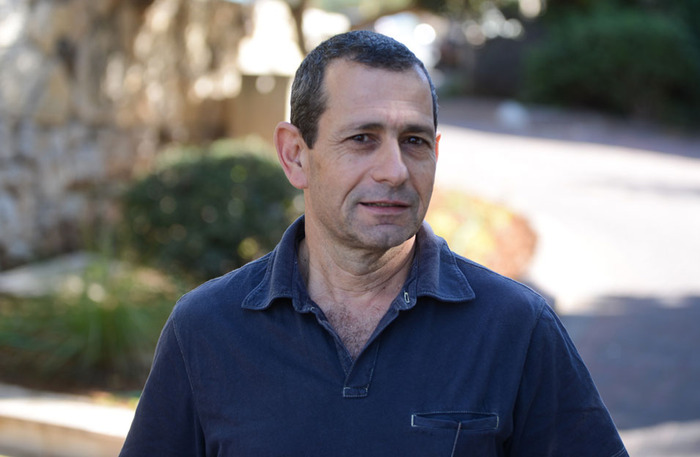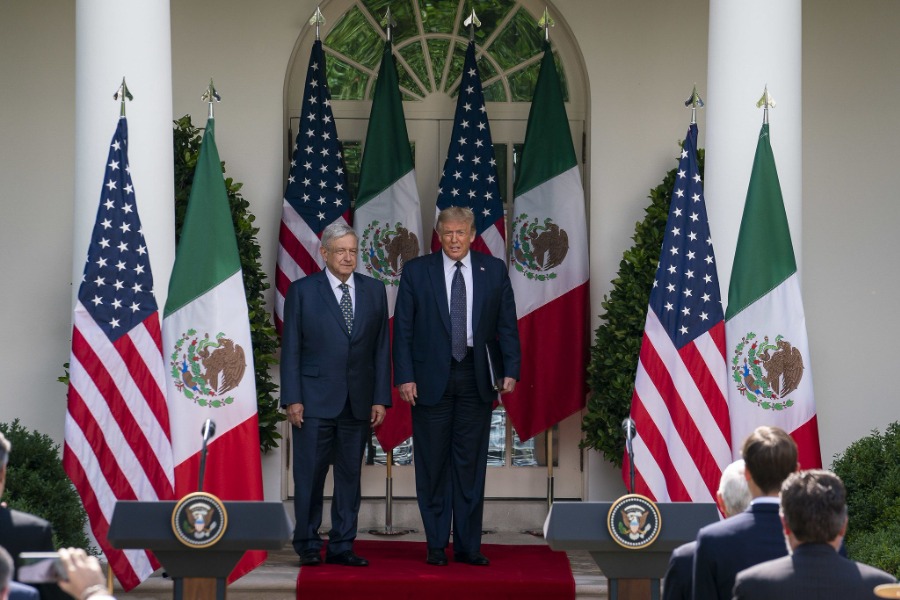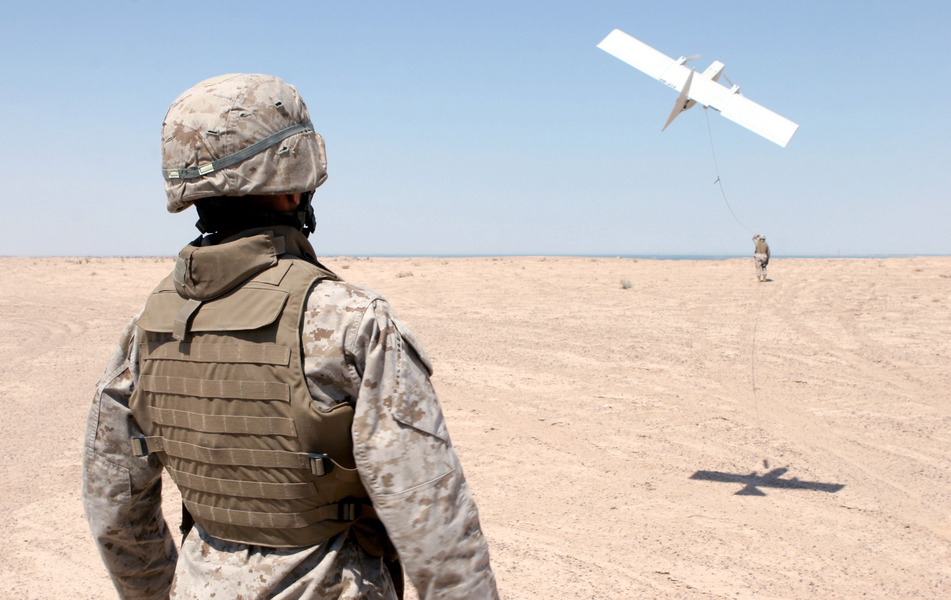Special Interrogation Gone Bad: The Samer Al-Arbeed Case
Israel is confronting a national scandal over the hospitalization of an alleged terrorist detained by the Israel Security Agency (ISA). On Aug. 23, three Israeli civilians were hiking near a West Bank water spring when a hidden explosive was detonated by remote control. Seventeen-year-old Rina Shnerb was killed instantly, and her father and brother were injured.

Published by The Lawfare Institute
in Cooperation With

Israel is confronting a national scandal over the hospitalization of an alleged terrorist detained by the Israel Security Agency (ISA). On Aug. 23, three Israeli civilians were hiking near a West Bank water spring when a hidden explosive was detonated by remote control. Seventeen-year-old Rina Shnerb was killed instantly, and her father and brother were injured. An extensive ISA investigation of the attack led to the arrest of four suspected members of a West Bank terror cell of an organization called the Popular Front for the Liberation of Palestine (PFLP), a designated terror organization according to the U.S., the EU and Israel, among others. Among those arrested on Sept. 25 was the cell’s commander—44-year-old Samer Al-Arbeed from Ramallah.
Al-Arbeed’s counsel claims that the day following his Sept. 25 arrest, he was brought before a judge and complained about chest pain, vomiting and difficulties in swallowing. It was widely reported in Israeli media that on Sept. 28, two days after his appearance before the judge, Al-Arbeed was rushed to a Jerusalem hospital in critical condition. According to his lawyer, he arrived unconscious at the hospital, suffering from kidney failure and with broken ribs and bruises all over his body. Upon arrival at the hospital, he was connected to a medical ventilator. An ISA spokesperson, however, merely stated that Al-Arbeed felt unwell during his interrogation and was evacuated to a hospital for medical examination and treatment as per ISA protocol for detainees in need of medical services. ISA sources also claimed that the detention of Al-Arbeed and the other cell members thwarted future terror attacks. The reference to the prevention of future attacks suggests that Al-Arbeed was subjected to special methods of interrogation, which the ISA views as an acceptable “necessity exception” to the rule against resort to coercive interrogation methods when “special methods” are necessary to prevent imminent terror attacks.
 Al-Arbeed was apprehended in front of his workplace, and Palestinian sources claim that he was also beaten badly by the special unit soldiers immediately following his arrest while still in front of his place of work. Anonymous Israeli security sources, presumably with ties to the Israeli military, claimed, however, that Al-Arbeed was transferred unharmed from the arresting soldiers to the hands of the ISA.
Al-Arbeed was apprehended in front of his workplace, and Palestinian sources claim that he was also beaten badly by the special unit soldiers immediately following his arrest while still in front of his place of work. Anonymous Israeli security sources, presumably with ties to the Israeli military, claimed, however, that Al-Arbeed was transferred unharmed from the arresting soldiers to the hands of the ISA.
The Ministry of Justice announced on Sept. 29 that it commenced an investigation into the circumstances leading to Al-Arbeed’s hospitalization. Yet, on Oct. 2, a military court extended Al-Arbeed’s detention, noting that his condition has improved, and allowed the ISA to resume his interrogation. In anticipation of this interrogation, security authorities have reinstated a temporary ban on Al-Arbeed’s ability to meet with his legal representatives.
Considerable uncertainty still surrounds the Al-Arbeed case, particularly about what specific interrogation methods were applied to him and whether these methods were the exclusive cause for his hospitalization (i.e., whether he had any preexisting medical conditions that aggravated the injuries he suffered during interrogation or the stress of interrogation).
Regardless of what actually happened to Al-Arbeed, the extensive public discussion in Israel of his situation invites a reconsideration of the weak legal and institutional framework governing ISA security interrogations. This case provides another illustration of the inadequacies of Israel’s laws and procedures—some of which were discussed in earlier Lawfare posts (relating to the use of special interrogations vis-a-vis Palestinian and Jewish terror suspects in the Abu Ghosh case, the Duma case and the Tabish case). It also underscores the significant gap between Israeli law and international law relating to coercive interrogations.
The principal elements of the current legal regime, as applied in practice by the ISA, are as follows:
- Following the 1999 landmark decision by the Israeli Supreme Court in PCATI v. Gov’t of Israel, the ISA has no authority to apply coercive measures of interrogation, and the application of such measures may amount to a crime under Israeli law. Still, the court indicated that (a) ISA officials may claim the criminal law defense of necessity ex post facto if they resort to coercive measures in order to save the lives of others (this applies in the “ticking time bomb” scenario and other urgent circumstances); and (b) the attorney general may establish ex ante criteria for circumstances under which his office will be inclined not to prosecute ISA officials who invoke the necessity defense.
- In 1999, pursuant to the ruling in PCATI, the attorney general published guidelines in which he provided, inter alia, that applying special methods of interrogation that fall short of torture could result in nonprosecution in circumstances where the decision to apply special methods met strict conditions of immediate necessity and proportionality (including the non-availability of an alternative way of obtaining the sought information) and where the methods were authorized by higher ranks within the ISA. This led to a practice of ISA interrogators obtaining authorization for the application of special measures from senior ISA officials. The guidelines were cited with approval by the Supreme Court in the Abu Ghosh case. (One judge in the Tabish case also expressed in obiter dicta a willingness to allow for interest balancing even for acts qualifying as torture. This statement was criticized by the president of the court in a later decision as not reflecting the court’s position).
- Litigation in recent years has illustrated that the ISA has developed a broad understanding of what constitutes immediate necessity. The ISA has approved special interrogations to expose “terrorist infrastructure” (e.g., “explosives laboratories” or weapons caches) capable of generating or facilitating terror attacks at an indeterminate time in the future, and to obtain information about concrete, yet not obviously imminent, security threats. Israeli courts have accepted this broad interpretation as acceptable under the 1999 decision and guidelines.
- There have also been numerous complaints about abuse and violence in ISA interrogations, which have resulted in detainees experiencing severe pain or suffering and sometimes permanent injury. Out of more than 1,000 complaints that have been brought to the MAVTAN (the Ministry of Justice inspector tasked with examining interrogees’ complaints), in only one case was a criminal investigation launched against ISA interrogators. (Israeli officials consider many of the complaints to be baseless and motivated by the detainees’ interest in “saving face” for cooperating with ISA interrogators). Israeli courts that have reviewed some of the complaints have tended to impose a heavy burden of proof on the detainees who claim they have been ill treated, including having the onus to establish that their permanent injuries were caused by the special methods of interrogation applied to them.
- In 2015, a governmental commission, advising the government on legal accountability reforms in the field of national security, rejected the recommendation of a previous commission of inquiry, which called for audiovisual recording of ISA interrogations. Instead, it recommended that interrogations would be live broadcast to a special control room, in which Ministry of Justice inspectors could perform surprise inspections (see post). According to the ISA, recording interrogations might result in their contents being leaked or revealed in court proceedings, allowing future detainees to better handle interrogations.
Israeli counterterrorism interrogation laws and practices suffer from systematic failures, which render interrogations, such as that which Al-Arbeed underwent, prone to abuse. First, the de facto move away from the absolute prohibition against torture and cruel, inhuman and degrading treatment has conferred overbroad discretion on ISA interrogators and their supervisors to determine the circumstances under which special methods of interrogations can be used. This legal regime has also enabled the ISA itself to be the one that draws the line in each individual case between the tactics that constitute acts of torture (and that can thus never be resorted to) and those that constitute less severe forms of infliction of pain and suffering. Such discretion not only cuts against the moral case underlying the absolute prohibition against torture and other forms of ill treatment in international law (including the inherent cruelty of torture, the wrongfulness of treating individuals as means to an end and the limited utility of applying coercion), but it also sets the stage for “slippery slope” dynamics and for chronic misapplication of legal definitions, which the courts—disappointingly—have been unwilling to reverse.
Under the current regime, in practice, special methods may be applied to an ever-broadening category of risks, rendering the ISA’s invocation of the necessity exception to the prohibition against coercive interrogation the rule and not the exception (at least in serious terrorism cases). In this atmosphere of deference to ISA interpretations of the law, the ISA’s propensity to apply coercion may increase in direct proportion to the magnitude of the perceived risk or operational need to obtain information, leading to serious violations of the rights of terror suspects. The Al-Arbeed case underscores, however, the counterproductiveness of deploying overly aggressive methods of interrogation that render the subject of interrogation unresponsive.
Second, what makes the Israeli interrogation system particularly worrisome is the loose system of external supervision over ISA interrogations, which creates a de facto zone of impunity for ISA interrogators. The lack of effective audiovisual monitoring and the poor record of Ministry of Justice criminal investigations into past complaints exacerbate concerns about the broad discretion in the application of special methods conferred to the ISA and render the prohibition against torture and cruel, inhuman and degrading treatment ineffective in Israel. Add to that the concern that judicial supervision over decisions whether or not to detain terror suspects also appears—in cases like Al-Arbeed’s—to have offered a limited degree of protection: Despite the complaints of the detainee about his health situation, a court did not intervene to prevent the continued use of special interrogation methods.
So, while we have no information that would question the ISA conclusion that Al-Arbeed is suspected of engaging in dangerous and reprehensible acts of terrorism, it is possible that we may never know why precisely he was subjected to special methods of interrogation. That said, we have reason to doubt, on the basis of past cases, whether resort to such special methods met the original 1999 “necessity defense” criteria of immediate necessity and proportionality (including there being no other way to obtain the information). Finally, the dire consequences of the Al-Arbeed interrogation—resulting in the detainee’s almost dying—raise serious questions about whether the legal distinction between special interrogations constituting and not constituting torture, as detailed by the 1999 guidelines, was observed in the case. This case again underscores the lack of a real dividing line between torture and other forms of intentional infliction of pain and suffering.
While the decision of the Ministry of Justice to immediately begin an investigation is, of course, a positive development, in the absence of audiovisual recordings it may be difficult for the inspection team to ascertain what exactly happened in the interrogation room.
In any event, it is clear that the current legal regime is incompatible with international law. Israel’s laws and practices on counterterrorism interrogation fall short of international standards in that they de facto allow for the application of coercive methods of interrogation, in violation of the absolute prohibition against torture and cruel, inhuman and degrading treatment found in customary international law and in international agreements to which Israel is a party (e.g., the International Covenant on Civil and Political Rights and the Convention Against Torture). Moreover, the 1999 legal edifice, which allows for a narrow criminal law exception for application of special methods of interrogation in extreme “ticking time bomb” situations, has been significantly eroded over the years—allowing for loose application, overseen by loose monitoring—further distancing Israeli practices from international norms. The unreasonable refusal to introduce audiovisual documentation of interrogations underscores the reluctance of the Israeli authorities to meaningfully address claims about excesses in ISA practices.
One can hope that the considerable media coverage and public interest in the Al-Arbeed case—an interrogation gone wrong from both a humanitarian and a security perspective (i.e., rendering the interrogee unresponsive to questions)—and the quick reaction of the Ministry of Justice to launch an investigation might encourage reexamination of existing laws, practices, and technological and institutional safeguards. It is interesting to note that the 1999 decision followed another interrogation gone bad—the death of Al-Samad Harizat in 1995 after being subjected to violent shaking in an ISA interrogation (see court decision on the case). Perhaps history will repeat itself once again, and legal reform will emerge out of another special interrogation gone bad.





